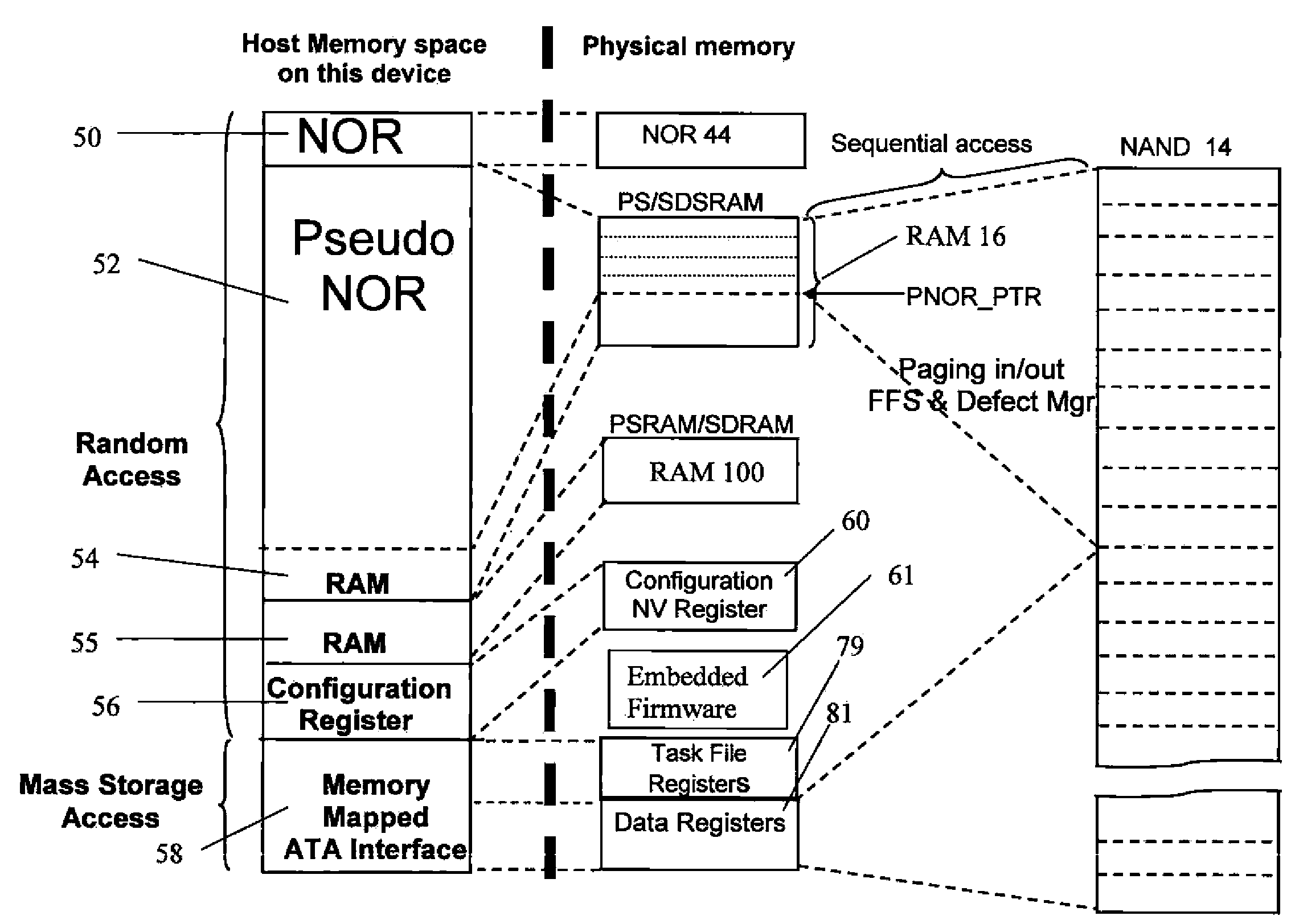Memory having improved read capability
a technology of read capability and memory, applied in the field of memory devices, can solve the problems of inability to provide automatic address mapping, considerable time constraints, and two shortcomings of the onenand devi
- Summary
- Abstract
- Description
- Claims
- Application Information
AI Technical Summary
Problems solved by technology
Method used
Image
Examples
first embodiment
[0021]Referring to FIG. 1, there is shown a memory device 10. The memory device 10 comprises a memory controller 12, a NAND memory 14, and a RAM memory 16. The memory device 10 interfaces with a host device 20, through a first RAM address bus 22, a first RAM data bus 24, and a plurality of control signals such as wait 26, RST# 28, and CE#, OE#, and WE# 30, all of which are well known to one skilled in the art of control signals for a RAM bus. Hereinafter unless otherwise specified, all of the control signals on the wait 26, RST# 28 and CE#, OE# and WE# 30 are referred to as first RAM control bus 32. The first RAM address bus 22, the first RAM data bus 24 and the first RAM control bus 32 are connected from the host device 20 to the memory controller 12 of the memory device 10. Further, as discussed previously, the interface between the memory device 10 and the host device 20 can be via a serial bus in which the data, address and control buses are serially connected between the host d...
second embodiment
[0076]Referring to FIG. 4 there is shown a memory device 110. The memory device 110 is similar to the memory device 10 shown in FIG. 1. Thus, like parts with like numerals will be designated. The only difference between the memory device 110 and the memory device 10 is that in the memory device 100, the second RAM bus 40 connects the RAM memory 100 directly to the host device 20, rather then to the memory controller 12. Thus, in the memory device 110, the host device has direct access and control of the RAM memory 100.
[0077]This difference between the embodiment of the memory device 10 and the embodiment of the memory device 110 is reflected in the memory mapping shown in FIG. 5. Similar to the memory device 10, the memory mapping for the memory device 110 comprises a NOR memory access portion 50 which is mapped to the NOR memory 44, a PNOR memory access portion 52 which is mapped to the RAM memory 16 in the memory device 110, which is then mapped to the NAND memory 14, and a RAM me...
PUM
 Login to View More
Login to View More Abstract
Description
Claims
Application Information
 Login to View More
Login to View More - R&D
- Intellectual Property
- Life Sciences
- Materials
- Tech Scout
- Unparalleled Data Quality
- Higher Quality Content
- 60% Fewer Hallucinations
Browse by: Latest US Patents, China's latest patents, Technical Efficacy Thesaurus, Application Domain, Technology Topic, Popular Technical Reports.
© 2025 PatSnap. All rights reserved.Legal|Privacy policy|Modern Slavery Act Transparency Statement|Sitemap|About US| Contact US: help@patsnap.com



